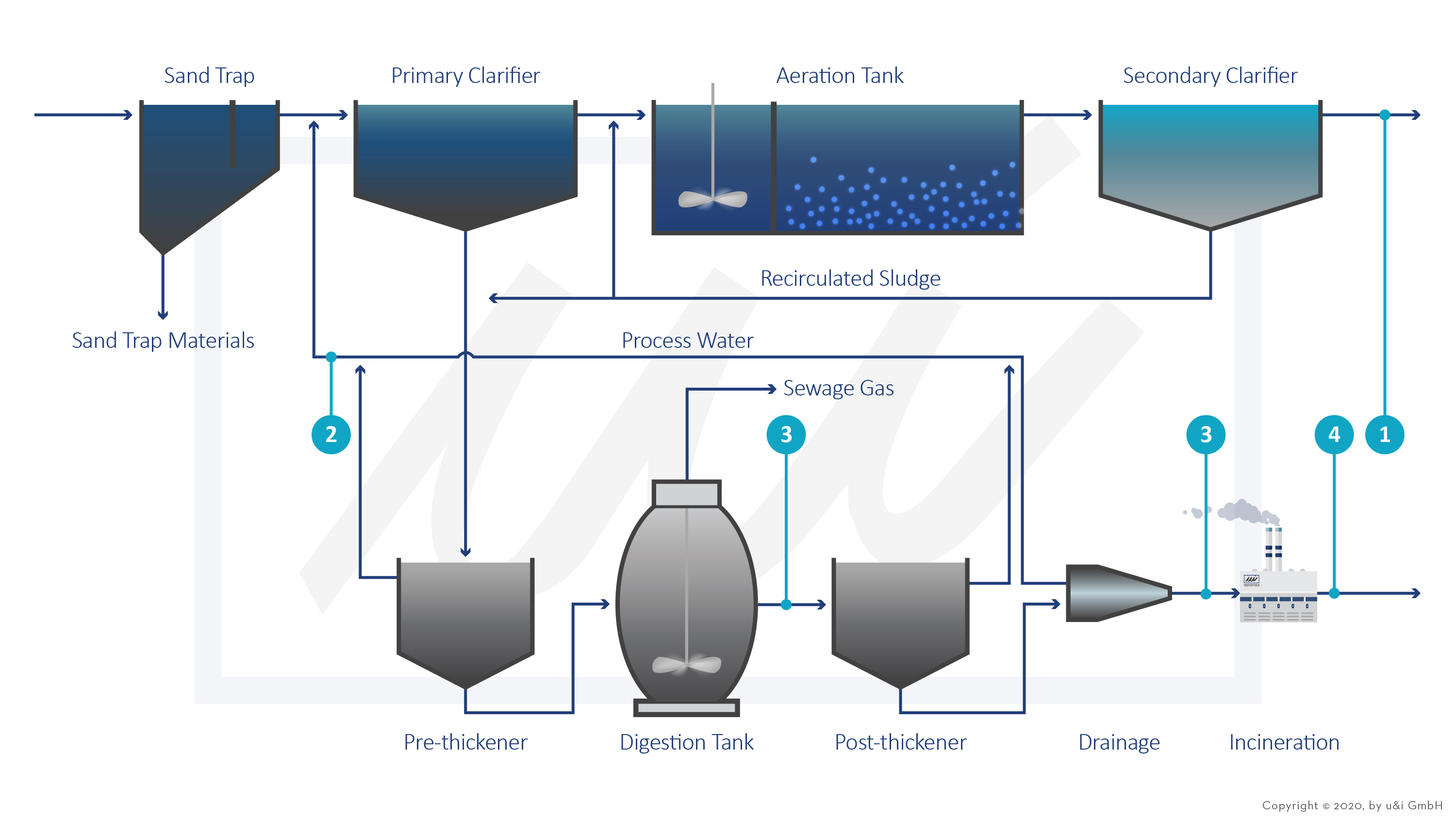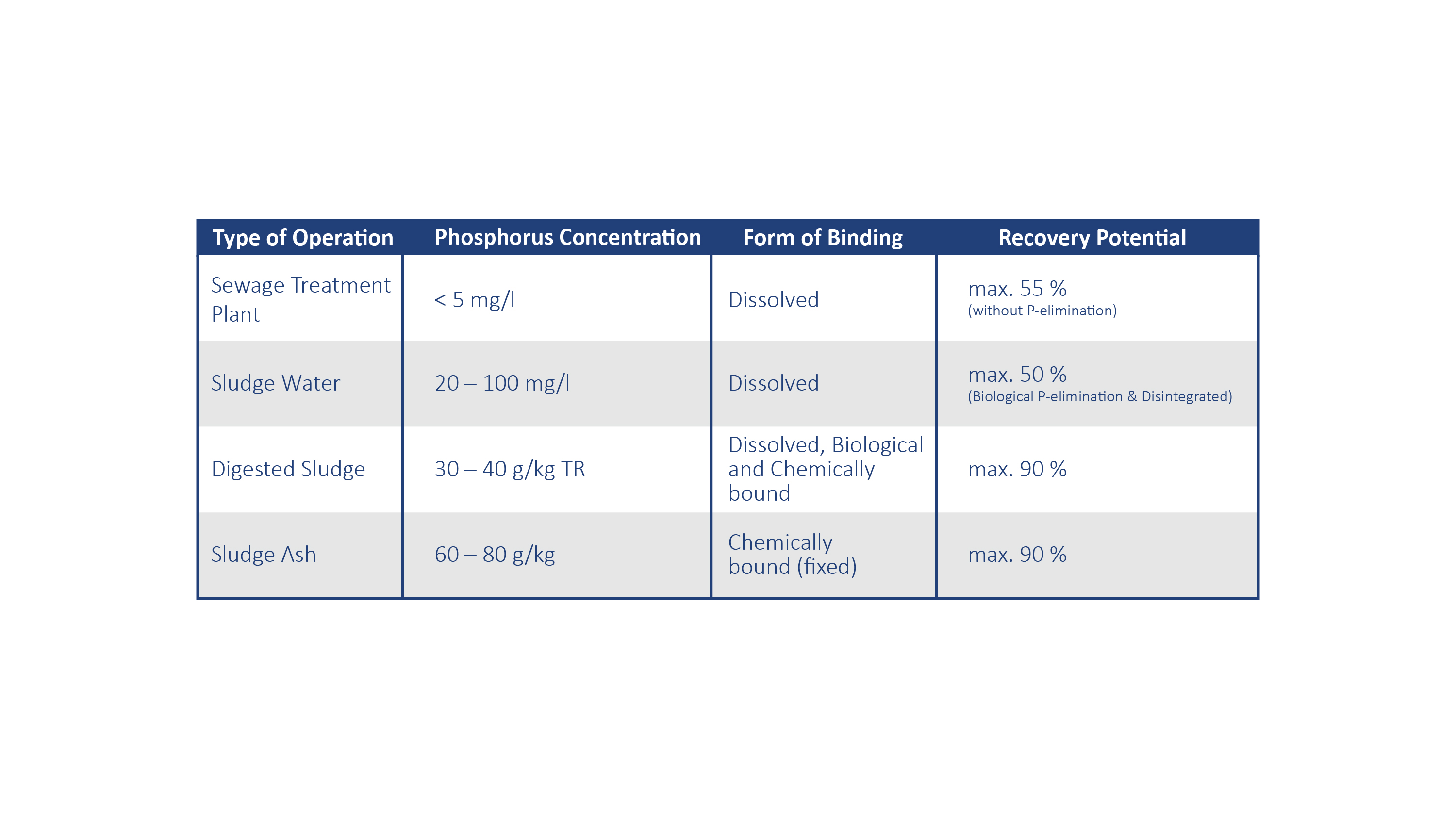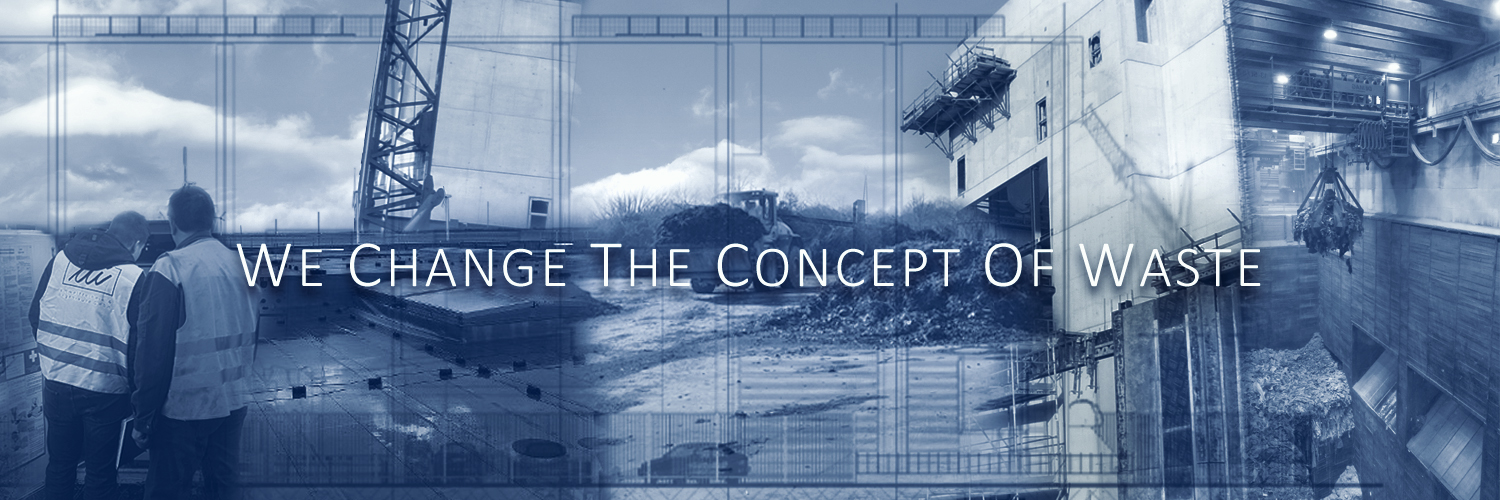From 2029 at the latest, there is an obligation to recover phosphorus from sewage sludge with a phosphorus content of 20 grams or more per kilogram of dry matter.
When these stricter requirements became known, numerous processes for the recovery of phosphorus from sewage sludge were developed, which start at different points in the treatment process:
- Drainage of the secondary sedimentation
- Sludge liquor
- Digested sludge / sewage sludge
- After the mono-incineration from sewage sludge ash

Depending on where in the treatment process the phosphorus recovery starts, the phosphorus is available in different chemcial forms and concentrations. Accordingly, the recovery potential (based on the inflow loads of the sewage treatment plant) varies (see table, source DWA, 2013).
Since the obligation to recover phosphorus will not exist until 2029, many processes are currently still being tested or are slowly moving into industrial operation.



